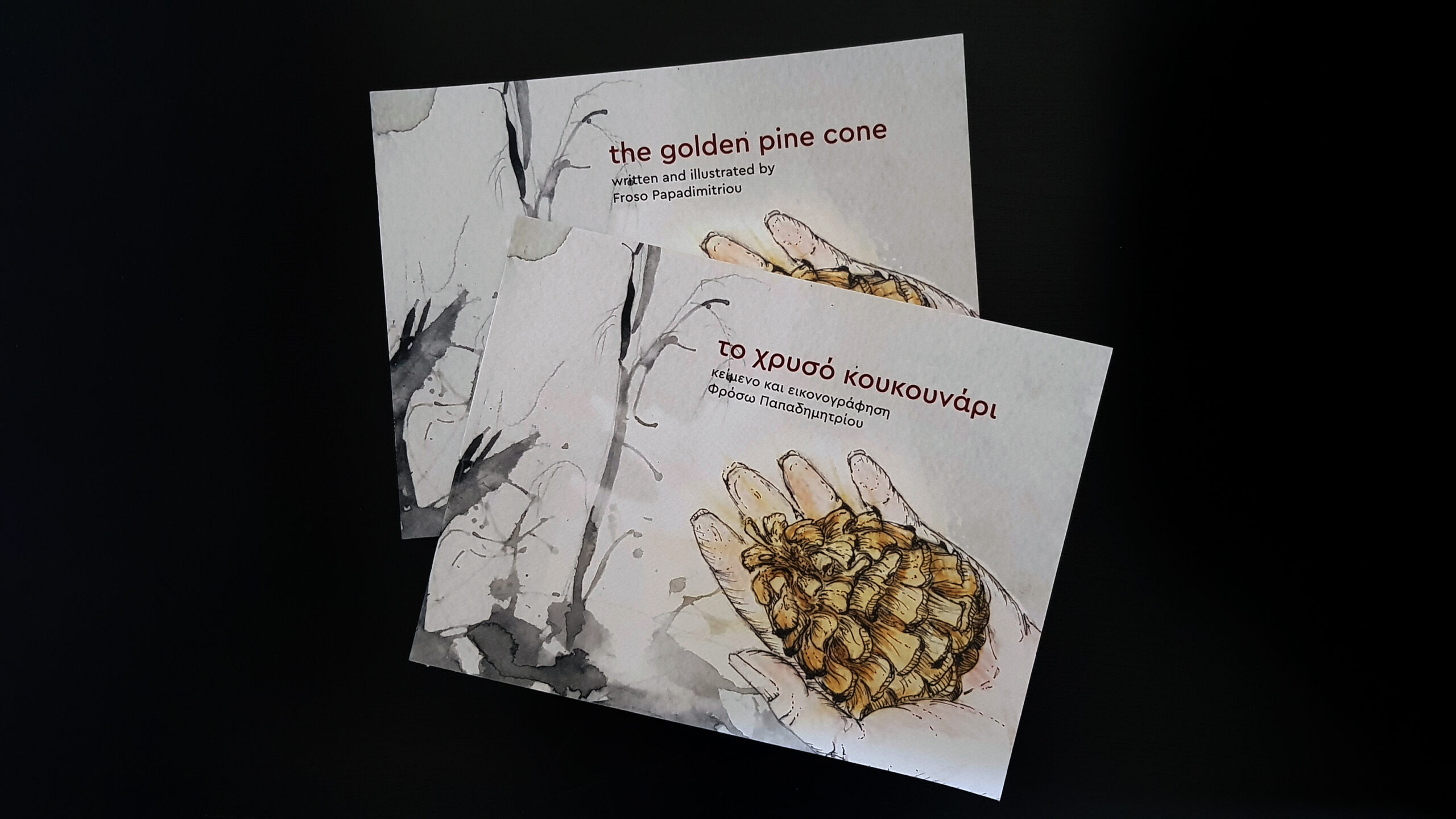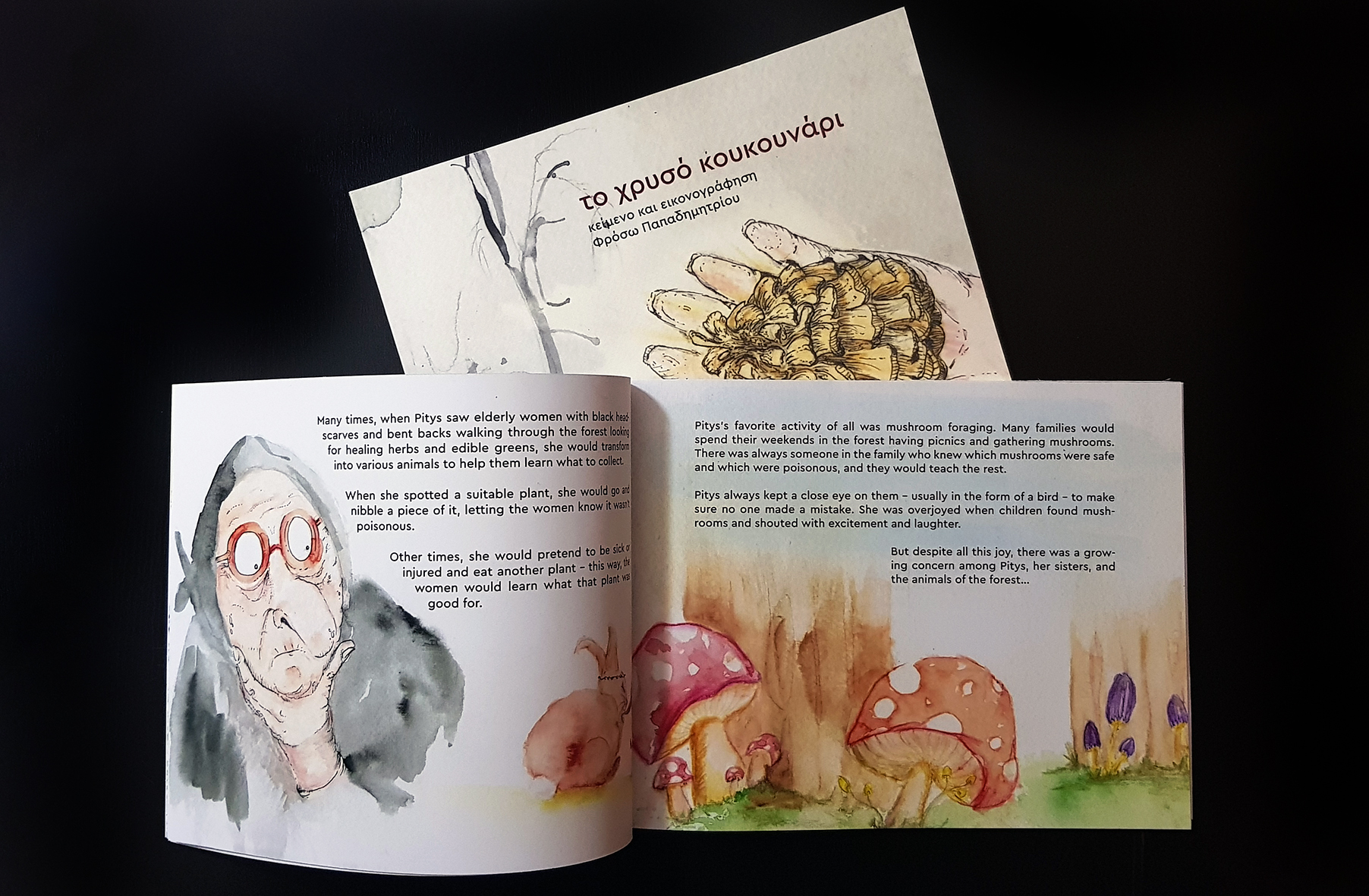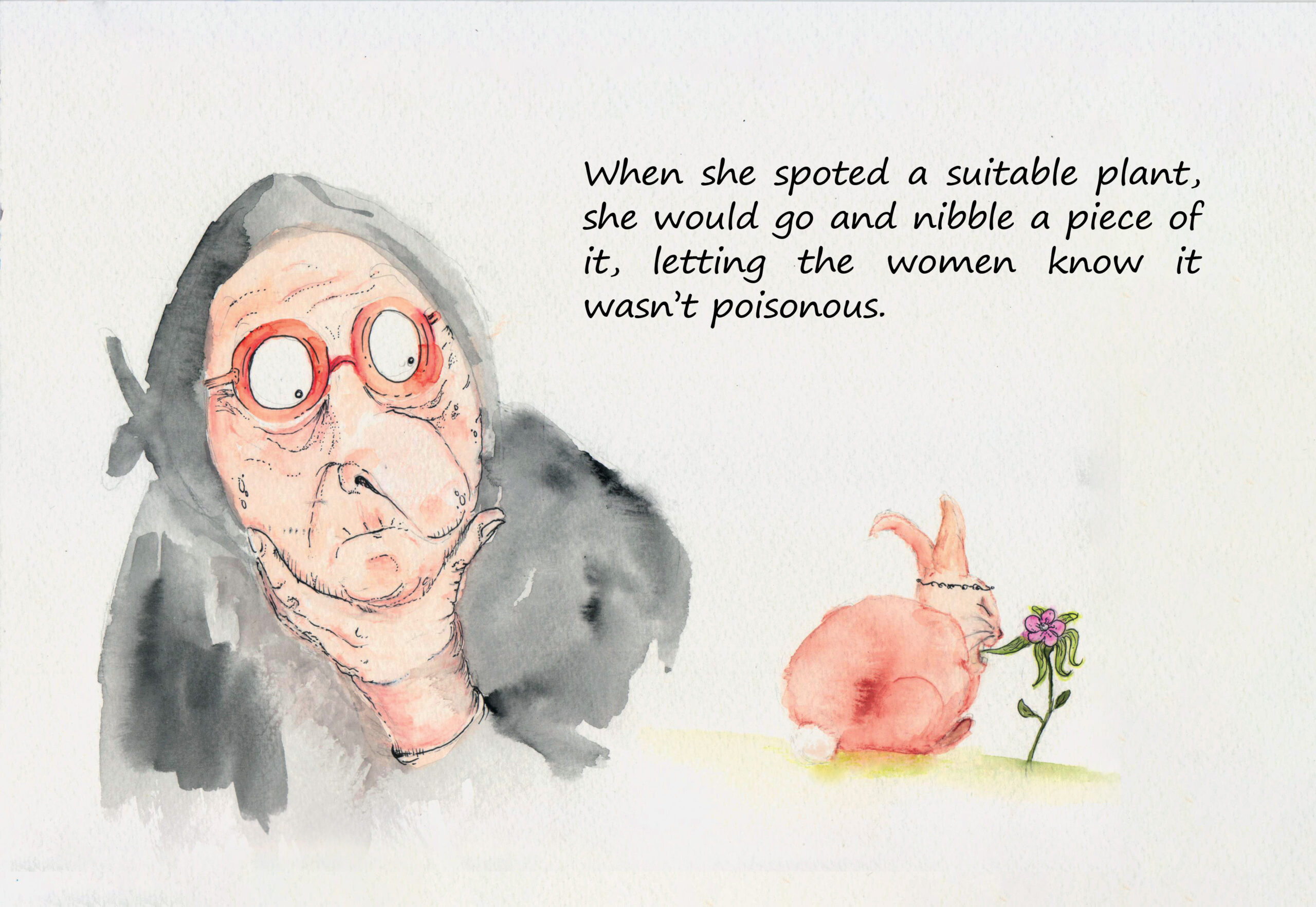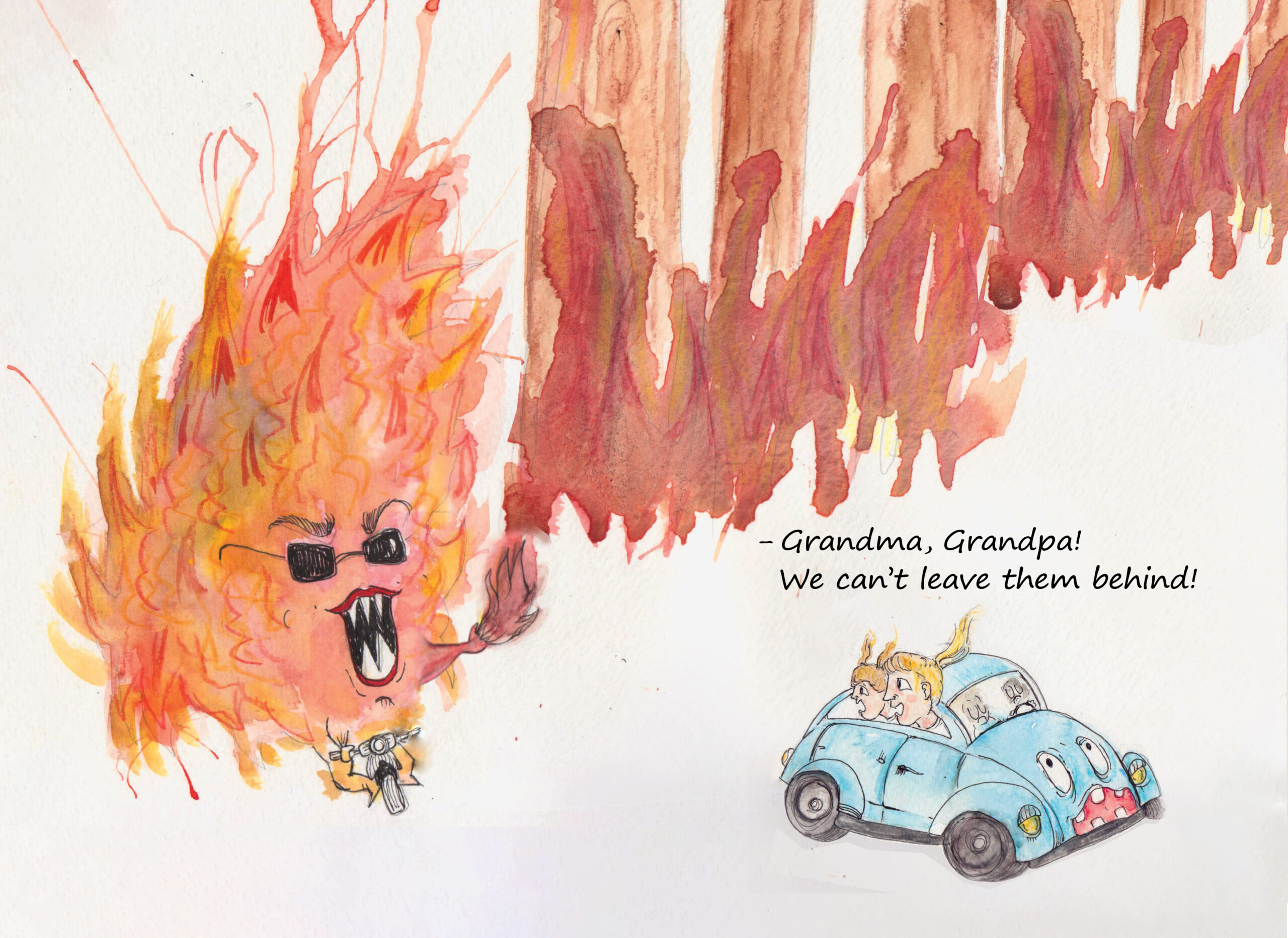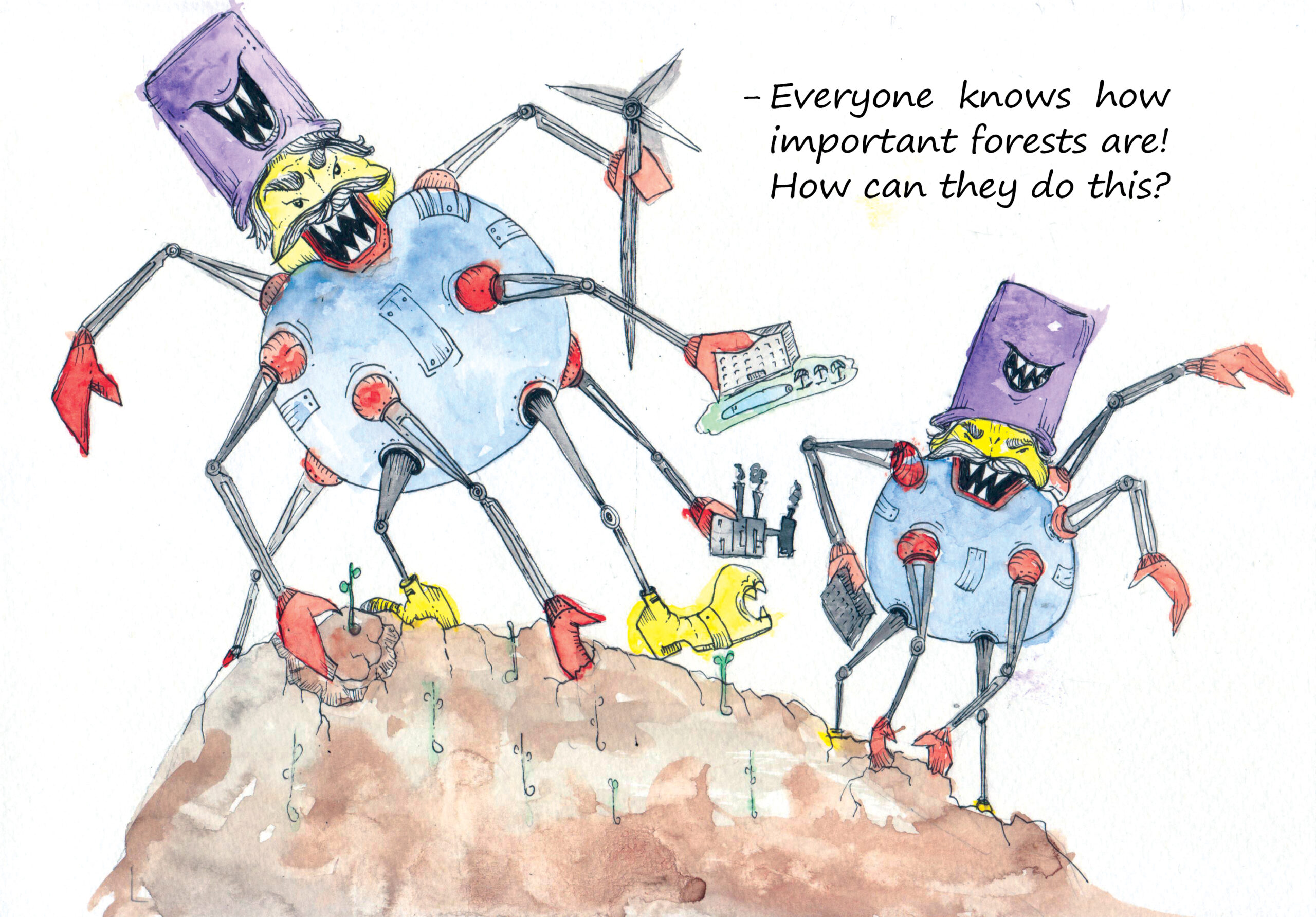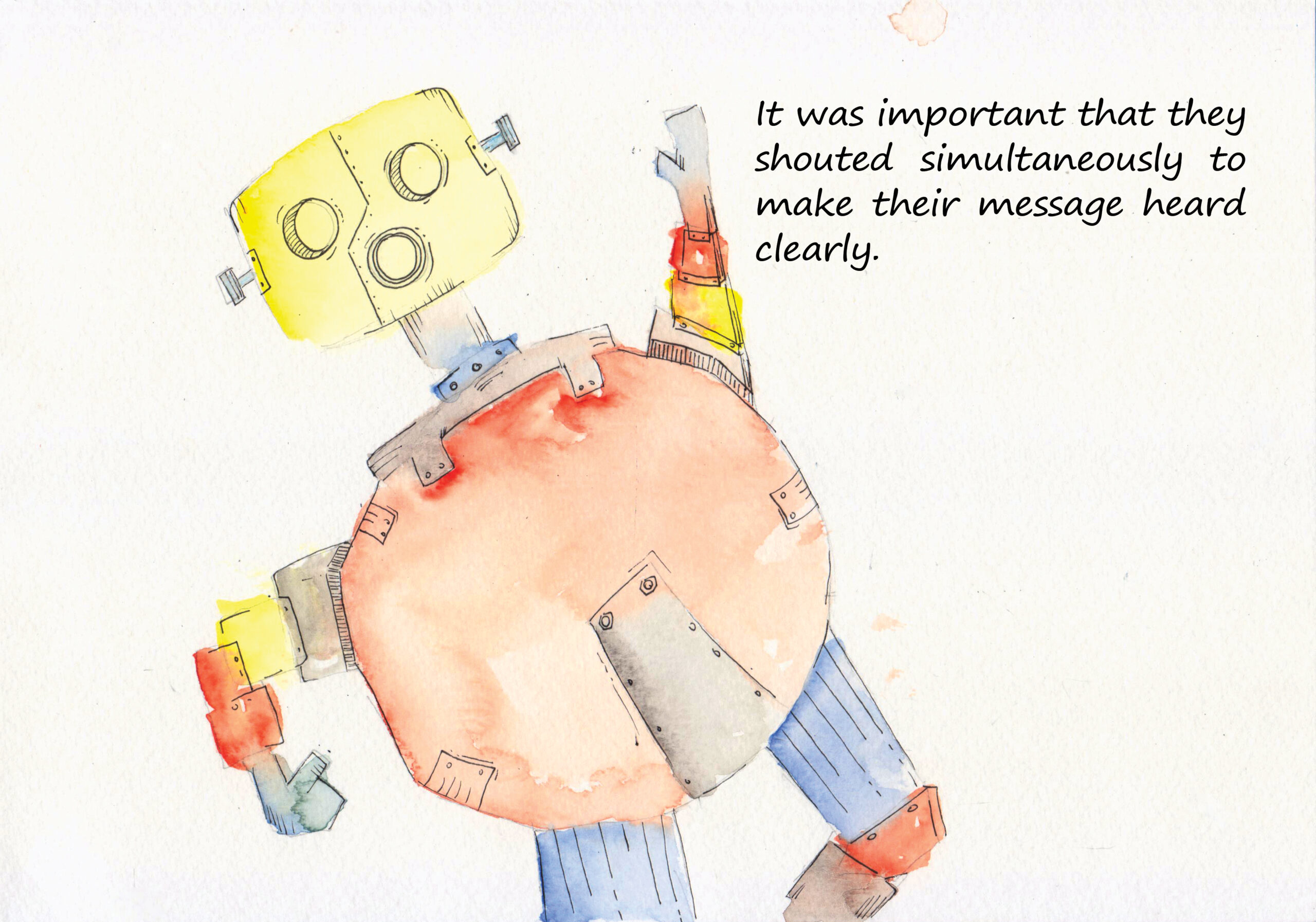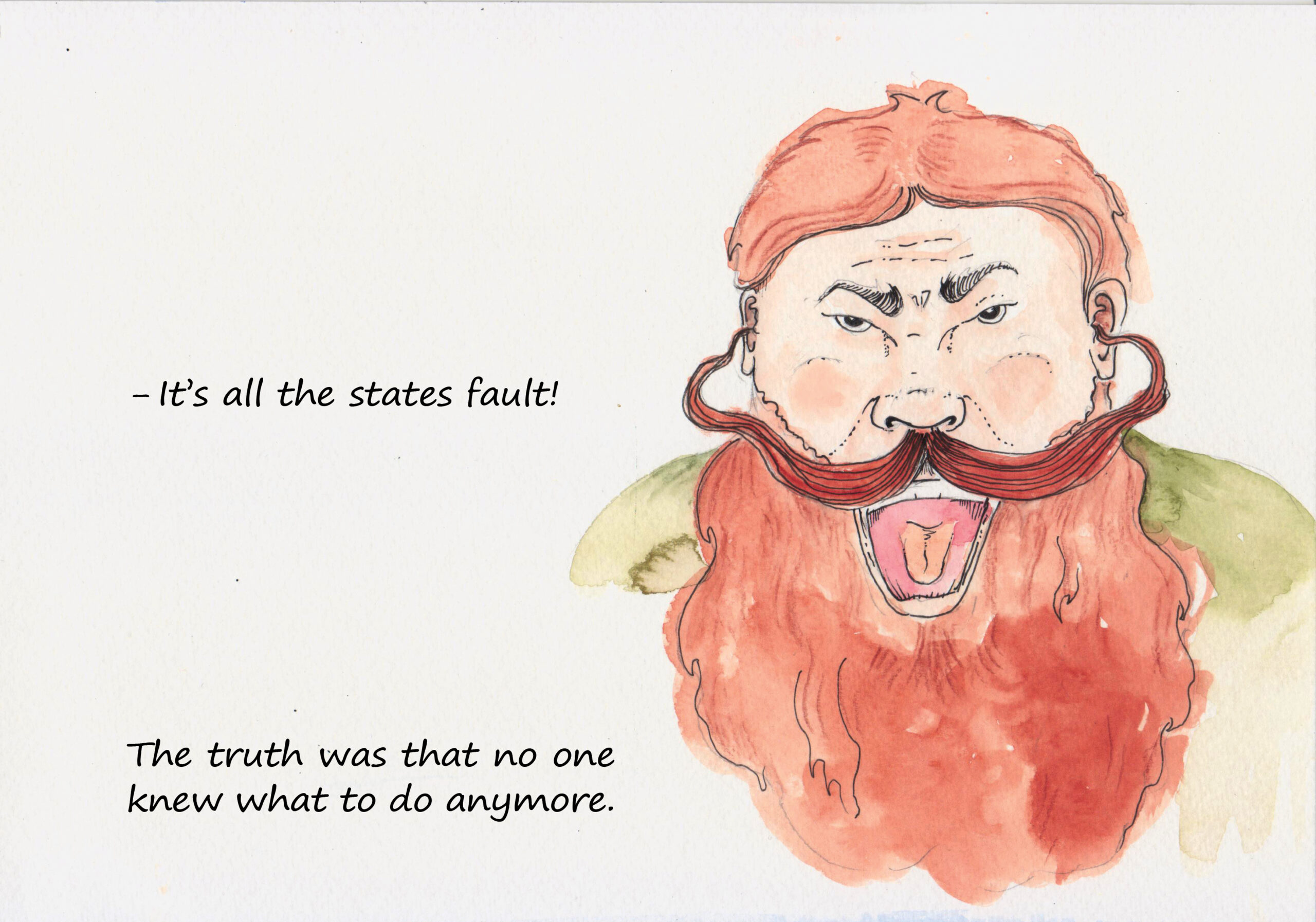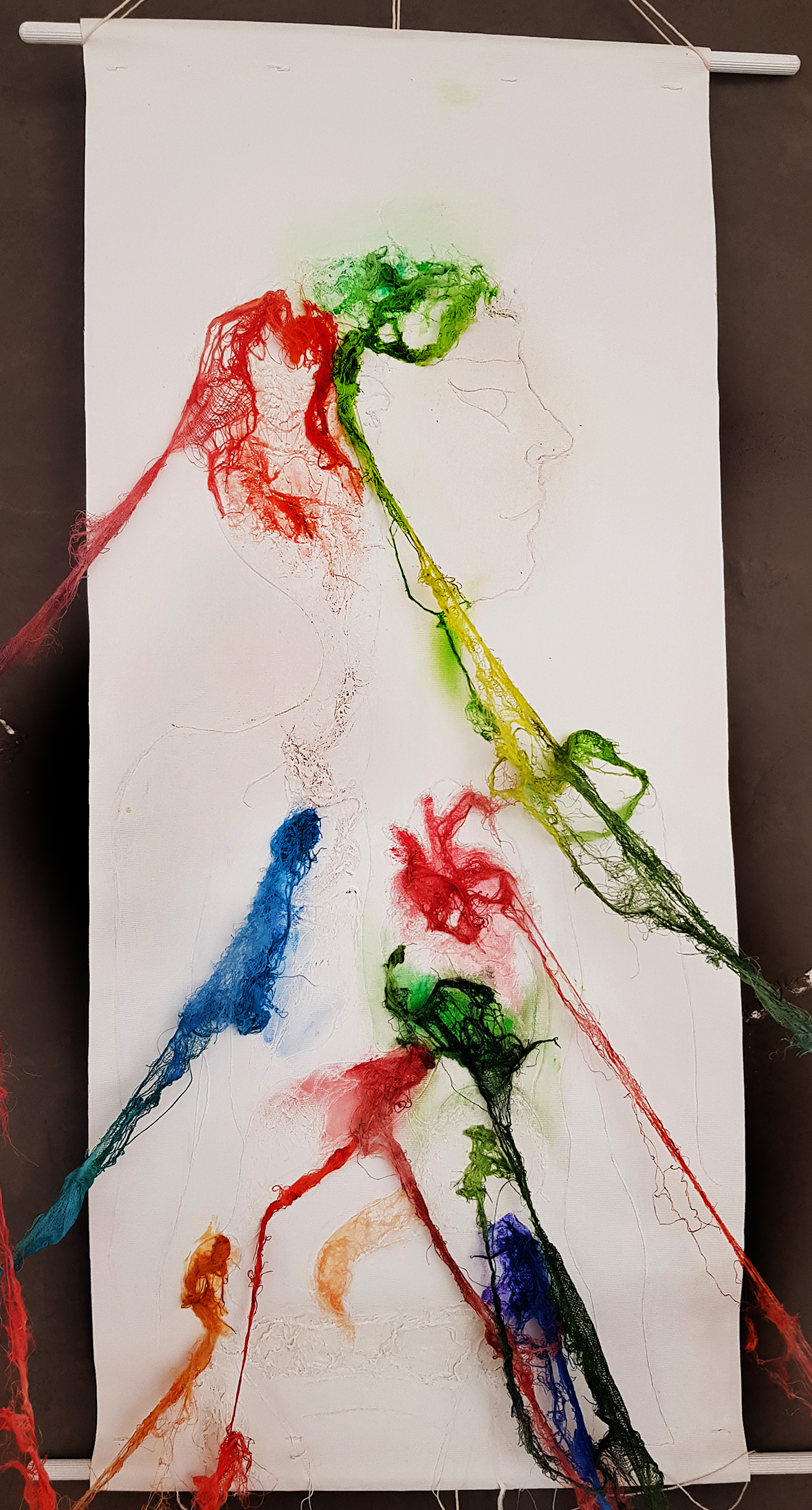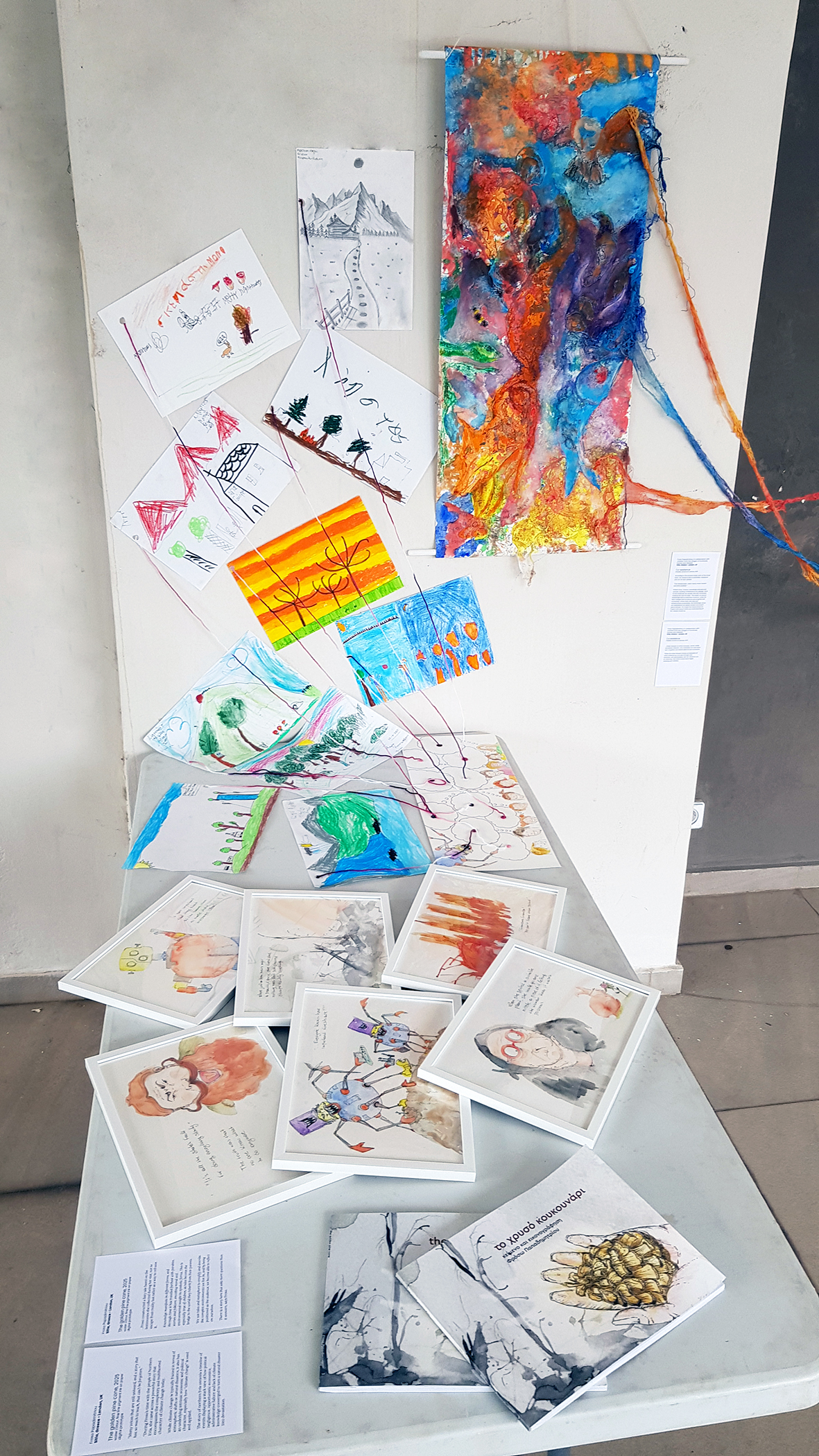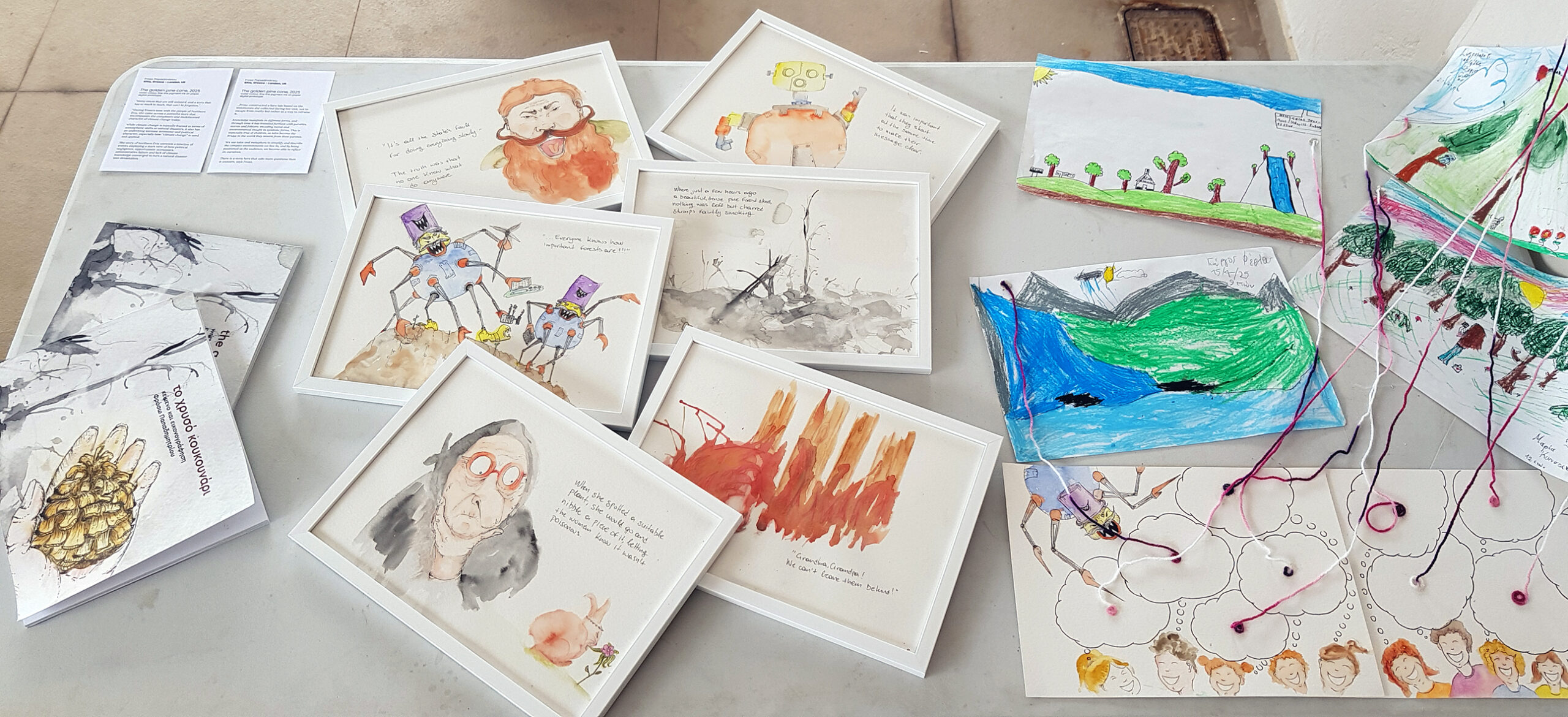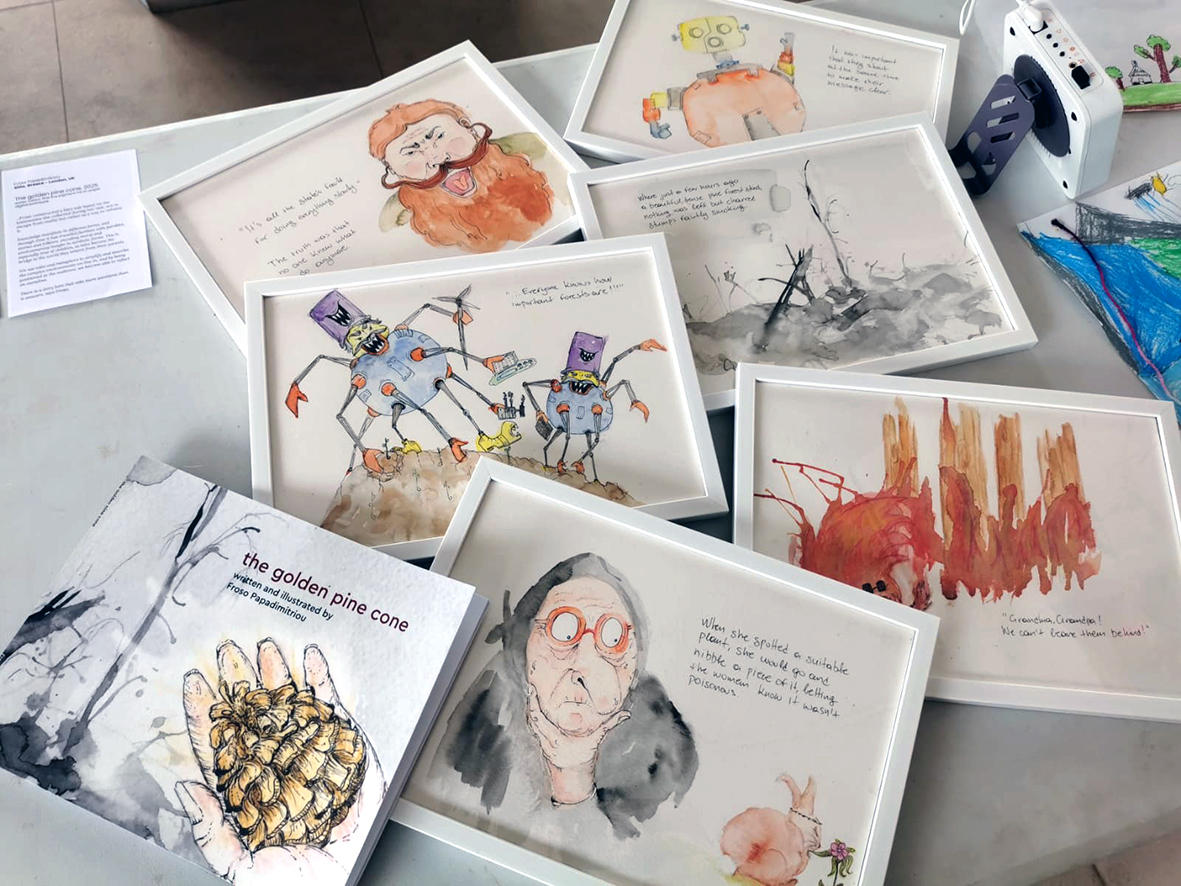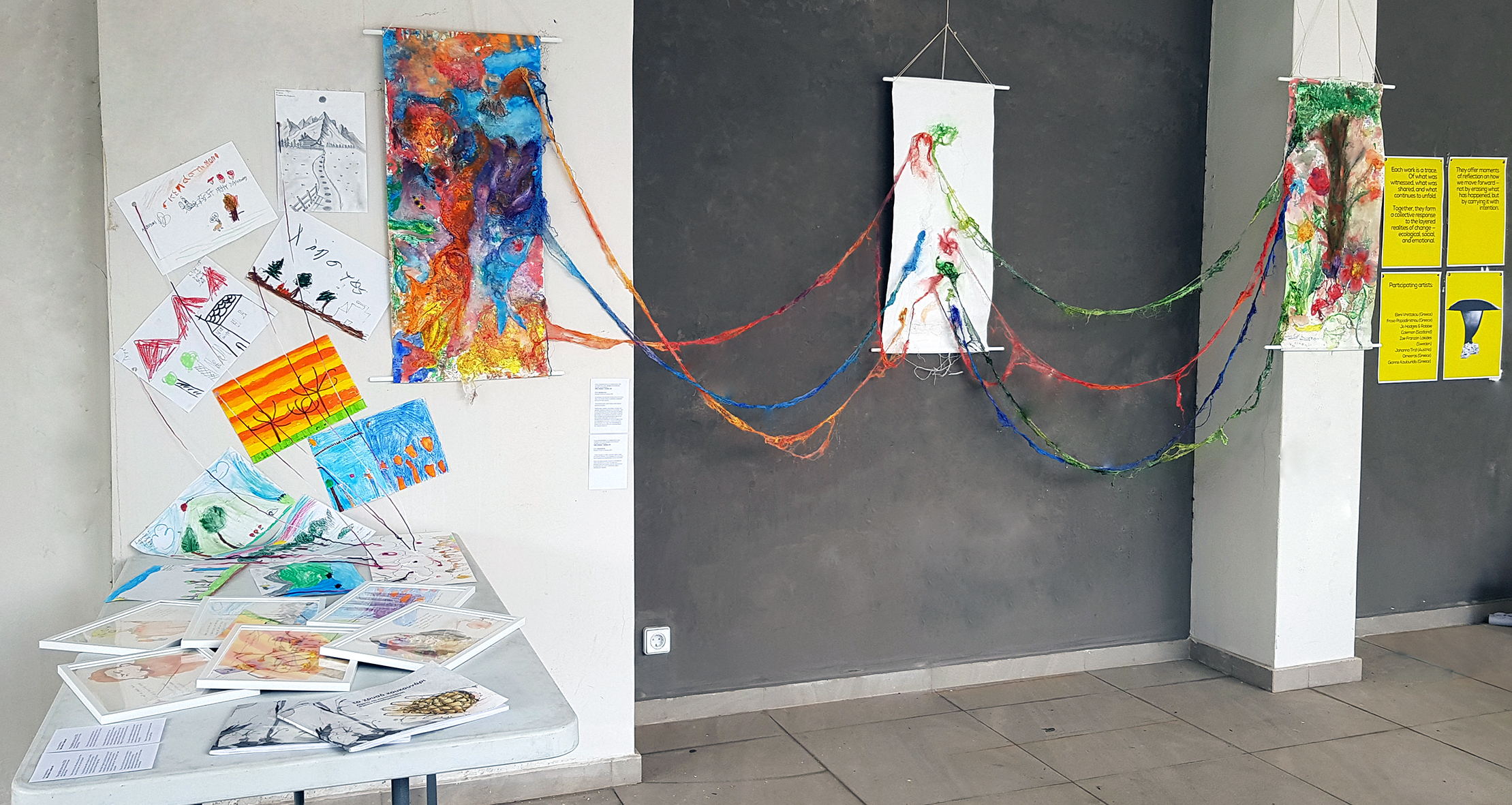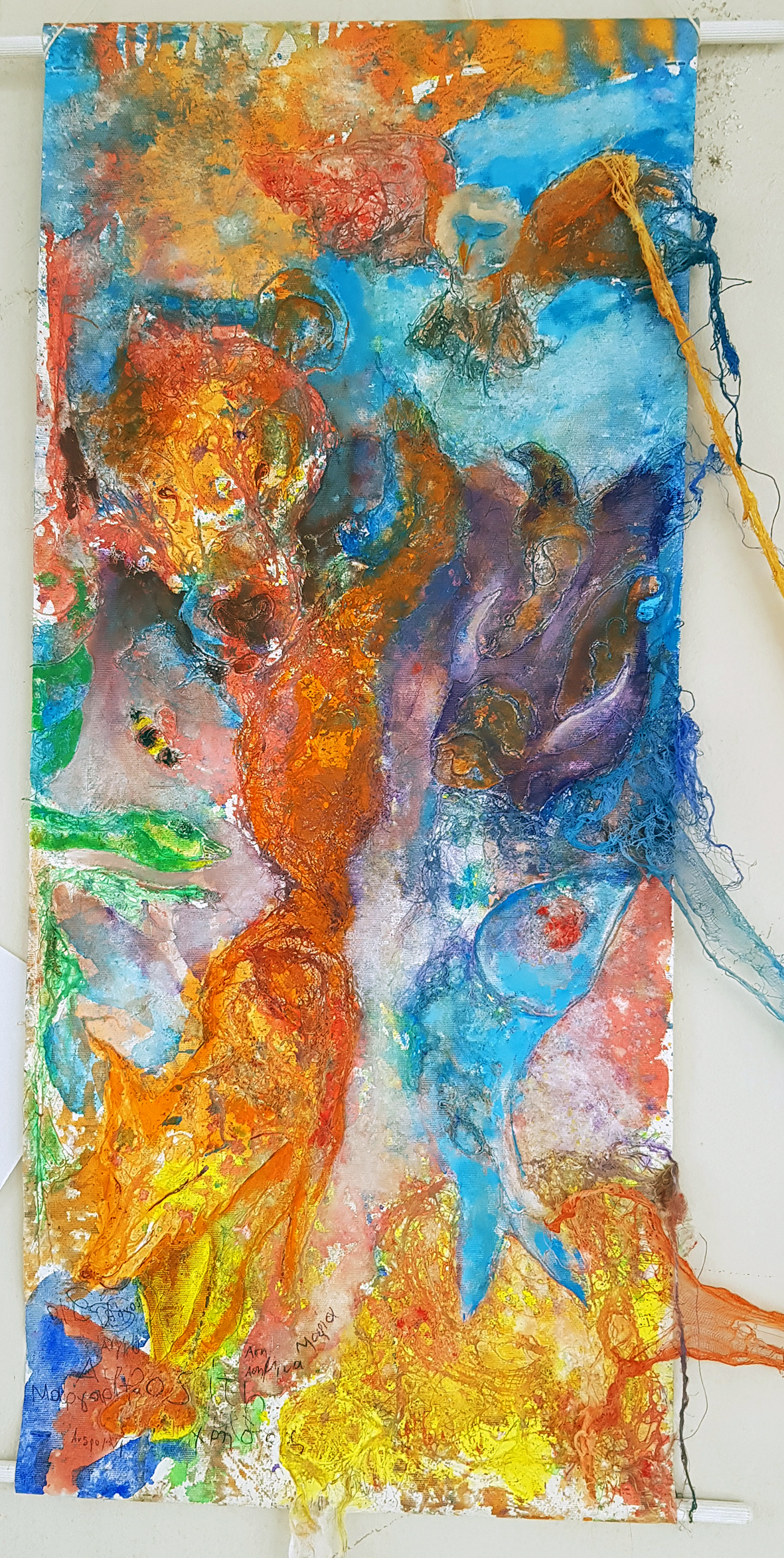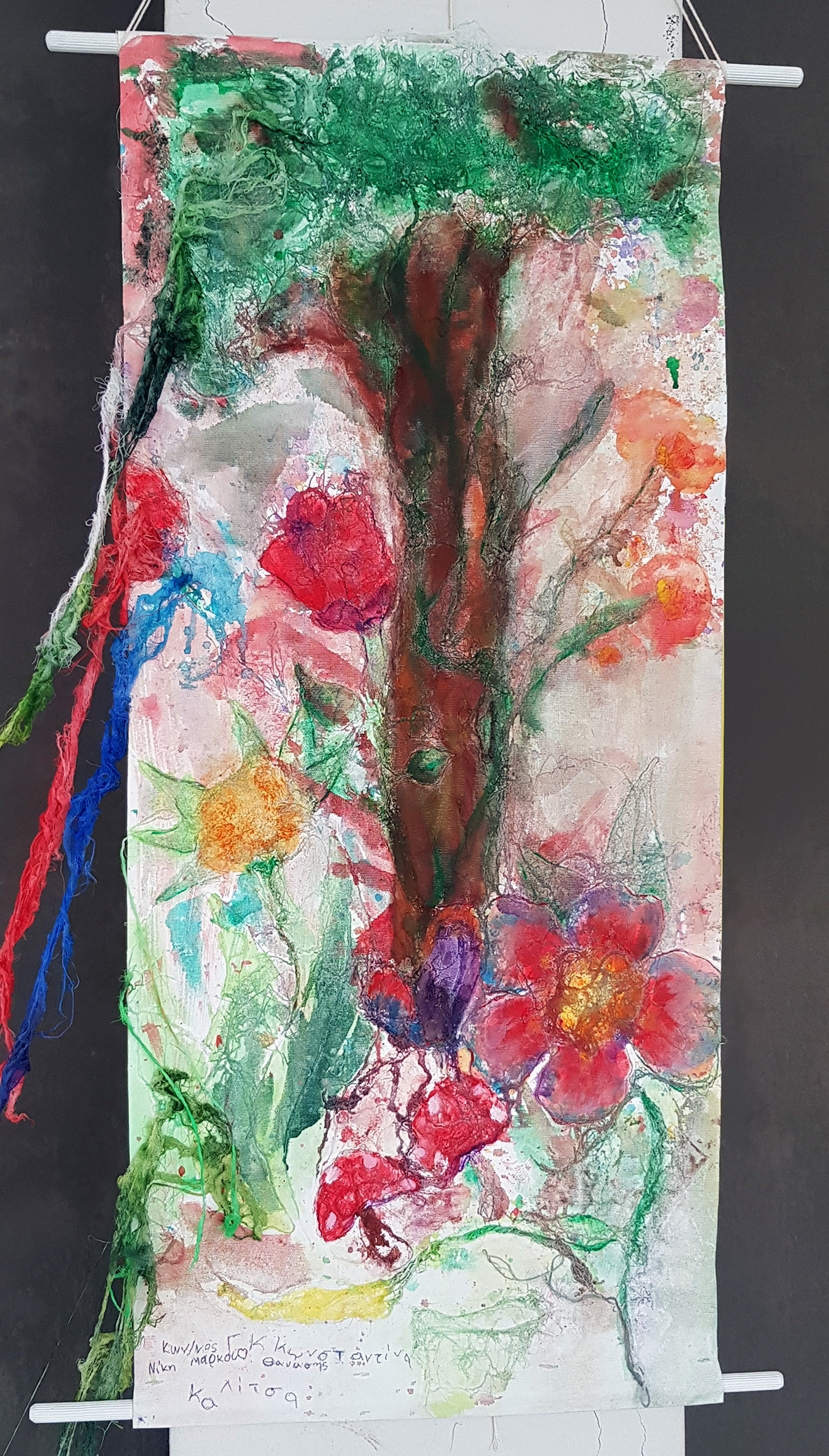Froso Papadimitriou
Artist in Residence
Based in: UK/Greece
Participated in: Evia Local Urban Lab
Froso Papadimitriou, born in Thessaloniki, Greece, studied applied arts, illustration, and graphic design. She completed a BA (Hons) in Fine Art at Middlesex University and an MA in Arts Management, Curatorial, and Educational pathway at Birkbeck University.
Froso works in painting, installation, sculpture, and video. She has collaborated with national and international galleries, such as Gazhane museum & School of Architecture, IT University of Istanbul (Composition: space-nospace exhibition), Refugee Museum in Thessaloniki (Dada no Dada exhibition), House of Parliament in London (Tomorrow’s Child’s exhibition), and National Taiwan Art University (Painting and Beyond exhibition).
She has contributed to various publications in the UK, Taiwan, USA, Greece, France, Germany, and Argentina, and her work was featured in the New York Times (Telephone project article). Froso has participated in art residencies in Japan, France, Portugal, Sweden and held a two-year residency at Beckenham Place Mansion Studios, London.
She lectures internationally and is a guest lecturer at the Royal College of Art in London, MA Environmental Architecture.
Froso has worked as Project Manager and Curator at Topolski Century, London, co-founded Collaborative Art non-profit organising art projects and exhibitions (2010-2013), αnd also partnered with Brunswick East for The Exchange project, an artists’ library and bookstore, London (2015–2017).
The golden pine cone, 2025
water colour, fine line pigment ink on paper, digital prototype
“Many voices that are still unheard, and a story that has so much to teach, that can’t be forgotten.”
During Froso’s time with the people of Northern Evia, she came across a powerful story that encompasses the complexity and multifaceted character of climate change today.
While climate change is typically framed in terms of atmospheric shifts or natural disasters, it also has an underlying intrinsic economic and political character, especially how “climate change” is used and applied. The story of northern Evia unravels a timeline of events displaying a stark view of how political negligence, opportunistic economics, administrative failure and lack of climate knowledge converged to turn a natural disaster into devastation.
Froso constructed a fairy tale based on the testimonies she collected during her visit, not to escape from reality but rather as a way to reframe it.
Knowledge manifests in different forms, and through time it has travelled furthest with parables, stories and folklore, encoding moral and environmental insight in symbolic forms. This is especially true of children, as tales become the bridge to the world they inherit from their parents.
We use tales and metaphors to simplify and describe the complex environments we live in, and by being positioned as the audience, we become able to reflect on ourselves. There is a story here that asks more questions than it answers, says Froso.
Froso Papadimitriou in collaboration with children from the villages of Kourkouloi, Kexries and Skepasti
Co-existence, 2025
threads, acrylics on canvas
According to the ancient Greek myth of the three fates, the thread of life is unravelled, measured and cut for each person.
“One thread exists, where many create clusters and form societies.”
Within these clusters, knowledge emerges and spreads, building civilisations in its passage. Here in this landscape are people who still remember working the land by hand. The wealth of natural knowledge here is inherited. However, while the land changes and terraforms and progress and technology create their own data and infrastructure ecosystems, the knowledge about our dependency on nature renders secondary and irrelevant. We forget the relationships we forged with nature while our understanding of the climate eludes us.
White threads on white canvases, barely visible and almost obsolete, are a metaphor for how many have forgotten our shared place in one ecosystem. While the white threads remain as reminders of what connects us, it is only through care, attention, and participation, like the children’s act of colouring, that these connections regain meaning and visibility.


